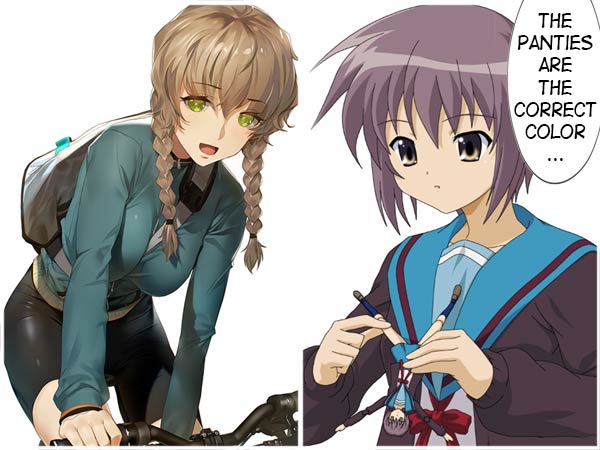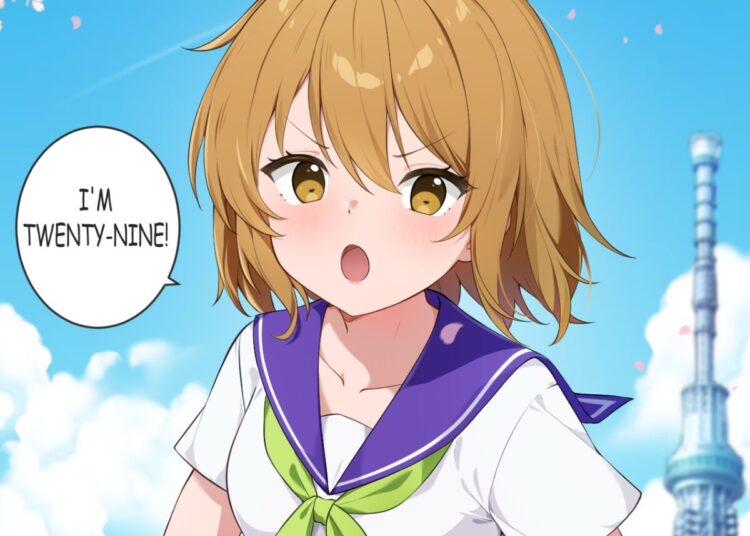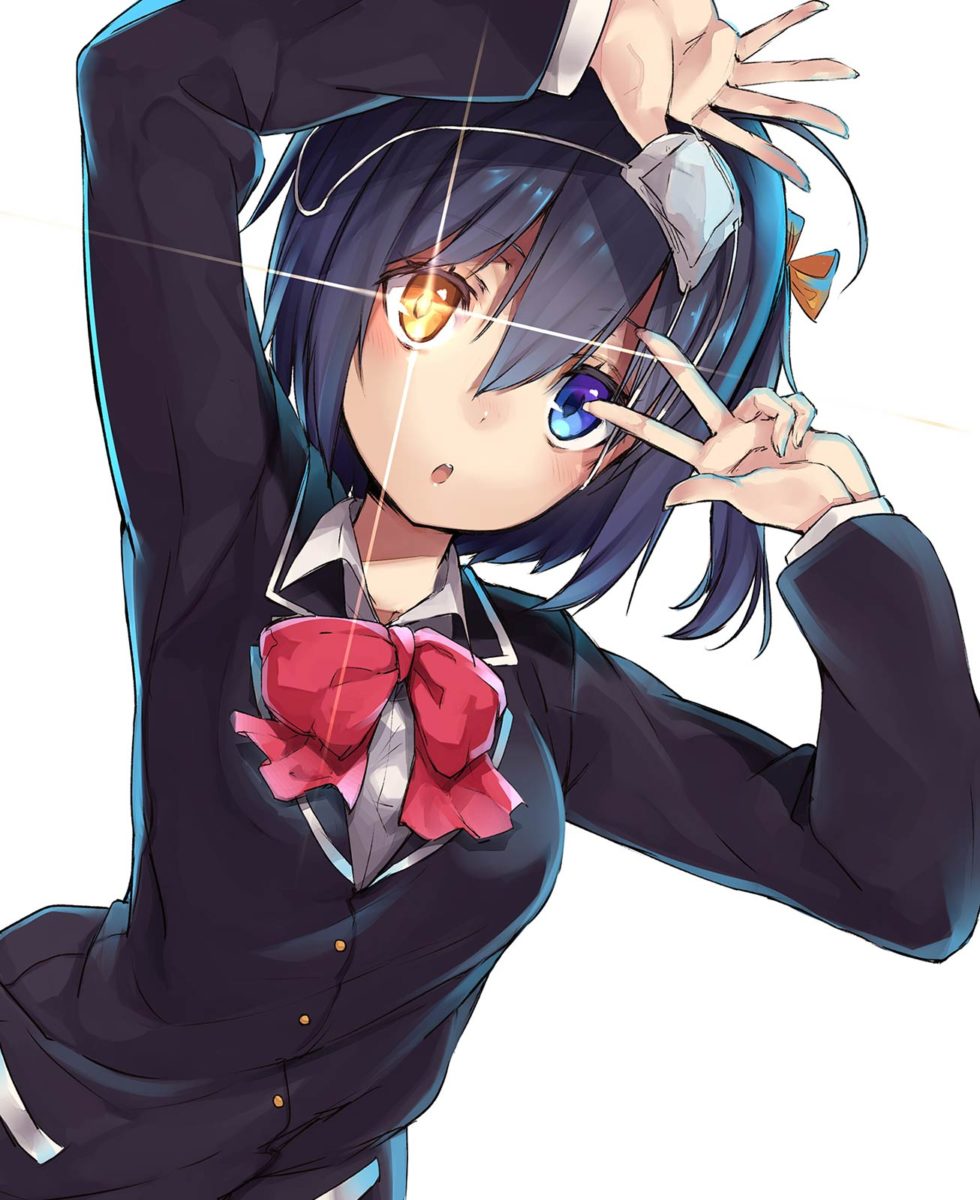Part of Peter’s Unified Theory of Japan is that if you throw a stone in the U.S., you’ll hit a lawyer, but a stone thrown in Japan will hit an artist. There are not a lot of lawyers in Japan, just one for every 5518 people, compared with one for every 261 people in the U.S. (This is partly because Japan has a very un-litigious society, but also because most of the things you need lawyers for, like registering land purchases, can be done by lower-tier officials.) But artists, wow, there are so many talented artists in Japan, and it’s a real pleasure carrying all the artbooks and doujinshi that J-List stocks. One thing I love is when artists create a new art-based online meme, like when the Cat Keyhole Lingerie exploded online and everyone on Pixiv posted his favorite characters wearing them. While nerds on the Western Internet were celebrating “pi day” last Tuesday (because it was 3.14), Japanese artists were posting fanart images of π/ (pronounced “pi slash”), which is a celebration of girls with bag straps running between their “pi” (oppai), something that the Japanese seem to be fascinated with. Do you like Japan’s newest oppai meme?
As interest in otaku culture has spread around the world, it’s common to see Japanese news programs discussing the “business” of anime, and the challenges it faces in the future. The worldwide anime market is worth around 1.8 trillion yen (US$18 billion ), which sounds like a lot of money until you consider how many series fail to recover their production costs, as well as the extremely low salaries in the industry. If you watch anime opening credits, you’ll see that the production was overseen by companies with names like Madoka Quartet or Prisma☆Illya Production Committee, which are made up of different groups: an animation studio like Shaft, a production company like Nitroplus, a licensing specialist like Aniplex, plus financial backers like Avex or, increasingly, American companies like NBC Universal or Netflix.
The most important part of the industry — the animation studios themselves — get the bulk of their revenue from sales of limited Blu-rays. Some show’s Blu-rays sell incredibly well, like Love Live Sunshine or Osomatsu-san, while other worthy shows do poorly (Nichijou, Panty and Stocking). One thing fans outside of Japan can do to help is buy the import Blu-rays for shows you especially like (I threw down for Space Battleship Yamato boxed set, for example), though obviously we’re all human and can’t always always pay those prices. Happily, there’s another way you can help: after Blu-rays, the second highest source of revenue to animation studios are anime figures. So you can help Japan’s animators by buying a couple more figures every year, and do your part to save anime!
See all the gorgeous figures J-List stocks here, or browse the figure ranking!
J-List loves to celebrate Japan’s artists, and we carry hundreds of high quality artbooks from Japan. We posted lots of new items to the site today, including a new Monogatari Series set of heroine-specific books, plus the new Pixiv Official Book for 2017. Read a review of the Pixiv artbook on our blog, too!

















